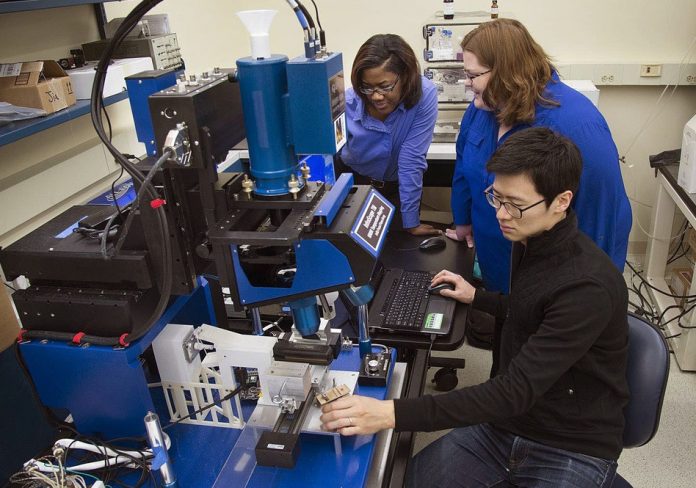Associate Professor of Mechanical Engineering, Purdue University
Tahira Reid does not work for, consult, own shares in or receive funding from any company or organization that would benefit from this article, and has disclosed no relevant affiliations beyond their academic appointment.
Purdue University provides funding as a member of The Conversation US.
View all partners
Associate Professor of Mechanical Engineering Tahira Reid leads a lab focused on human-centered design. Over her career, she’s gone outside the “traditional engineering box” and integrated compassion for the users of products and services into the design process – what she and colleagues refer to as “compassionate design.” She has also leveraged her insights as a Black woman in mechanical engineering in her work. Together, these considerations led to the development of a compassionate design framework that helps engineers think critically about their design decisions and, in her case, an investigation of how heat from flat-irons can damage curly hair.
In this interview, Reid describes how her personal experiences led her to focus on the human aspects of engineering, and why she believes a focus on people’s problems, combined with an engineering mindset, leads to more innovative products and services.
If you take a mechanical engineering brain that has compassion, or just a human-centered way of thinking, I feel like we can make a lot things better because analytical thinking abilities with compassion and moral considerations could have major impacts in society.
I remember as a child watching a show called “MacGyver.” And it was fascinating how he would always find solutions to get out of trouble with the most obscure random items. So I would say that definitely was a spark.
When I was a sophomore at Rensselaer Polytechnic Institute, I took a class called Introduction to Engineering Design. It was in that class that I remembered an idea I had in third grade to build a Double Dutch jump rope device that can replace people to turn the ropes. And the Double Dutch machine was definitely the first time I saw something go from an idea to a working prototype.
After my master’s degree, I started to realize that I wanted to think a little bit more beyond just traditional mechanical engineering. I wanted to be more intentional about the people side of things.
Engineering is usually focused on making a physical product or system of some kind. It includes modeling and analysis and solutions which are usually quantitative. When problems are presented that cannot draw from physics fundamentals or math, then it is often not considered an engineering problem.
I like the challenge of stepping into uncomfortable places and asking questions that most people won’t.
One example is hair. How can mechanical engineering impact hair care? When you have a mechanical engineering background and combine that with being a Black woman, questions about hair care become obvious. We have a unique hair texture and there is a lot involved with our hair care, so a mechanical engineering lens provides opportunity to think about it differently.
When I became a professor, I collaborated with another faculty member, and we worked together and did some things that garnered a lot of media attention, because it was just different. When do you see mechanical engineers working on hair?
At the Ph.D. level, I brought psychology into my work. Because I got outside of the traditional engineering box, I was allowed to tap into human problems, human things that resonated with me and caught my attention.
Like my compassionate design work – that was inspired by a conversation with a woman who counsels breast cancer survivors. She shared the story of one person who, when she would go in to get a mammogram, she would say: “It’s me against the machine.” And I just heard those words and I said, “Why are we creating things that people feel like is an enemy to them, and it’s so scary for them?”
The compassionate design framework was created to help engineers know how to think about end users in a certain way. So with a person getting a mammogram or radiation therapy for cancer treatment, one can ask: How do we design so that they have a sense of security, so they’re not feeling fearful?
I’m motivated by some of the literal things engineering can do – yes, products, systems. But also the analytical thinking that we engineers can bring to social problems – those things motivate me.
[Over 100,000 readers rely on The Conversation’s newsletter to understand the world. Sign up today.]
Write an article and join a growing community of more than 135,900 academics and researchers from 4,199 institutions.
Register now
Copyright © 2010–2021, The Conversation US, Inc.






